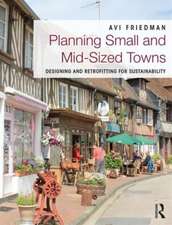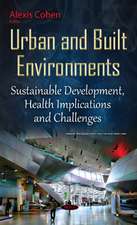Industrial Organisation and Location: Cambridge Geographical Studies, cartea 16
Autor P. J. McDermott, Michael Tayloren Limba Engleză Paperback – 18 mar 2009
Preț: 286.69 lei
Nou
Puncte Express: 430
Preț estimativ în valută:
54.86€ • 57.42$ • 45.66£
54.86€ • 57.42$ • 45.66£
Carte tipărită la comandă
Livrare economică 31 martie-14 aprilie
Preluare comenzi: 021 569.72.76
Specificații
ISBN-13: 9780521105606
ISBN-10: 0521105609
Pagini: 236
Dimensiuni: 152 x 229 x 13 mm
Greutate: 0.43 kg
Editura: Cambridge University Press
Colecția Cambridge University Press
Seria Cambridge Geographical Studies
Locul publicării:Cambridge, United Kingdom
ISBN-10: 0521105609
Pagini: 236
Dimensiuni: 152 x 229 x 13 mm
Greutate: 0.43 kg
Editura: Cambridge University Press
Colecția Cambridge University Press
Seria Cambridge Geographical Studies
Locul publicării:Cambridge, United Kingdom
Cuprins
Part I. Location, Communication and the Organisation: 1. Introduction; 2. The structural contingency model of organizations; 3. The organisation and its external linkages; Part II. Environment and enterprise structure in the United Kingdom Electronics Industry: 4. The electronics industry in the United Kingdom; 5. Measuring organisational structure, performance and development; 6. Defining task environments through linkages and information contacts; 7. Towards a spatial model of organization-environment interaction; 8. Summary and conclusions.
Descriere
This book attempts to advance locational explanation in industrial geography by more fully exploring relationships between organizations and the environments within which they operate.





























